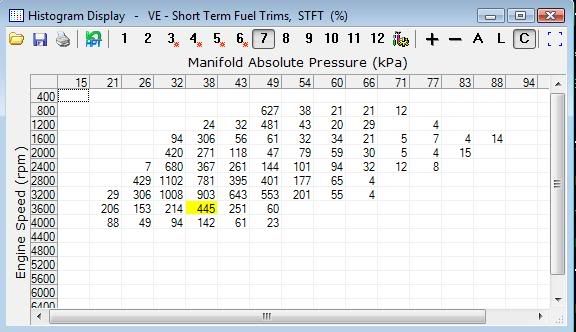I'll do my best to explain a problem that has been nagging at me. I have a 2006 M6 GTO. I just recently install some Kooks LT's, Vararam CAI, Ported Intake, and LC-1 Wideband. I have been following the guide in the HPT help file and have yet to get past the VE tuning stage.
In the help file, it says to turn off LTFT's and STFT's. I did this, and drove around logging AFR%Error and then applied this to my VE table. I did several iterations of this to the point where AFR%Error hoverered around -1 or -2 % error. Did the same thing with WOT areas of the VE table. I have also set PE to be a 12.6 AFR for now.
Later, I turned on STFT's just to see what they were doing, and this is where my question comes in. On several logs, my AFR%Error at cruise/idle shows -1 or -2. However, STFT's in the same cells show +4 or +5. This is about 6% error between the two. Does this mean my WB is off by ~6%? This would mean all my WOT AFR's are actually 13.4's and not 12.6's. For this reason, I've had to stop tuning until I get this figured out.
Also, I checked for voltage offsets (even though they are grounded to the same place) and Logworks LC-1 readings matched dead nuts the HPT readings, so I don't think voltage offset is a problem.
Is it common for there to be such a discrepancy? What should I trust more? If I trust the LC-1, then when I go back to Closed Loop, the STFT's are just going to be sitting at ~6%. If I trust, the STFT's, then whats the point of a wideband and how can I trust it at WOT?




 Reply With Quote
Reply With Quote

 (I'm MAFless)
(I'm MAFless)
